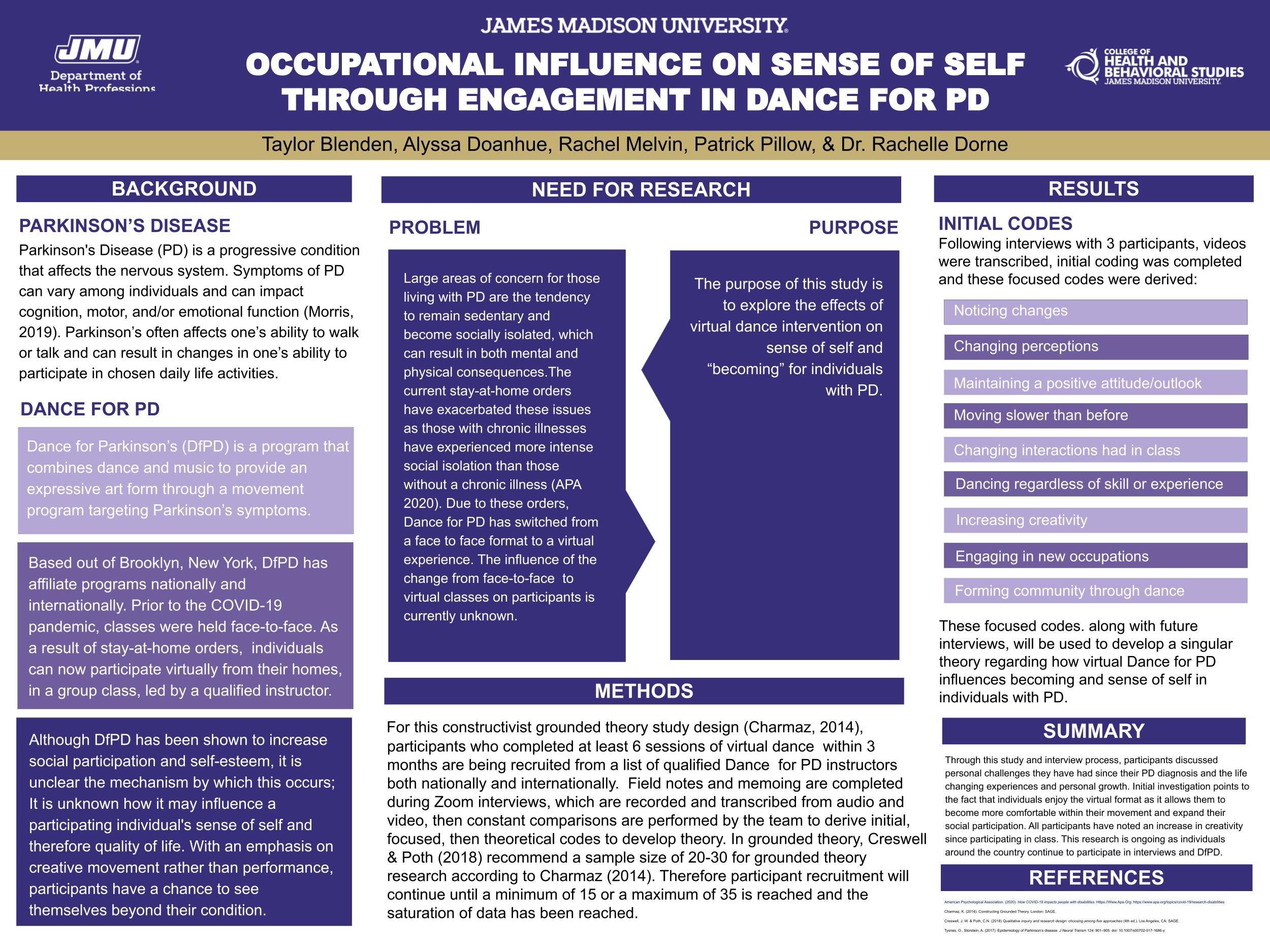Occupational Influence on Sense of Self Through Engagement in Dance for PD
Occupational Therapy
Parkinson's Disease (PD) is a neurodegenerative disease that affects 1 to 2 out of every 1,000 individuals in a given population. Due to its high prevalence, the physical symptoms of Parkinson’s disease are well recognized, however, there is less known about the psychosocial and cognitive effects of living with PD and effective ways to address those symptoms. Dance for PD is a program that combines dance and music to provide an expressive art form with a movement program targeting Parkinson’s symptoms. Dance for PD can improve motor symptoms through use of goal directed movement. Although Dance for PD has been shown to increase aspects like social participation and self-esteem, it is unclear the mechanism by which this occurs and how it may influence a participating individual's sense of self and therefore quality of life (QoL). Parkinson’s often has an unpredictable course of symptoms and can result in changes in one’s ability to participate in chosen occupations, which is why the program is meaningful for many participants. Dance for PD enables participants to feel connected to others facing similar challenges. The concepts of “sense of self” and “becoming” address how one sees oneself and and the person they are becoming as a result of participating in the Dance for PD program. With an emphasis on creative movement rather than performance, participants have a chance to see themselves beyond their condition. Due to constraints brought on by the pandemic, many Dance for PD programs switched to a virtual format. This dynamic change context severely limits options for social participation, community mobility, leisure, and other meaningful occupations. The purpose of this research is to develop a theory that explains the experience of participation in virtual Dance for Parkinson’s (PD) related to the evolution of sense of self and becoming.

